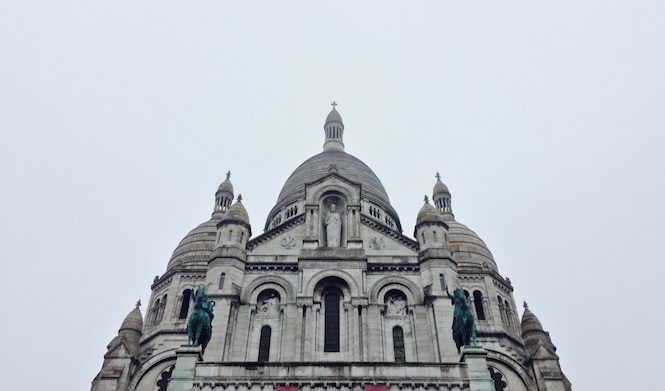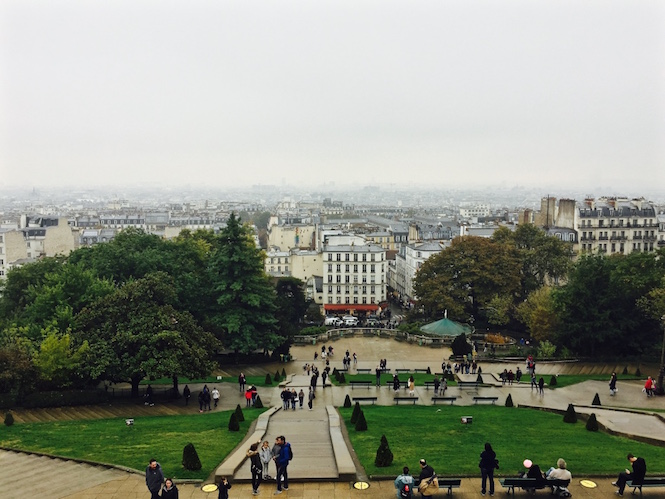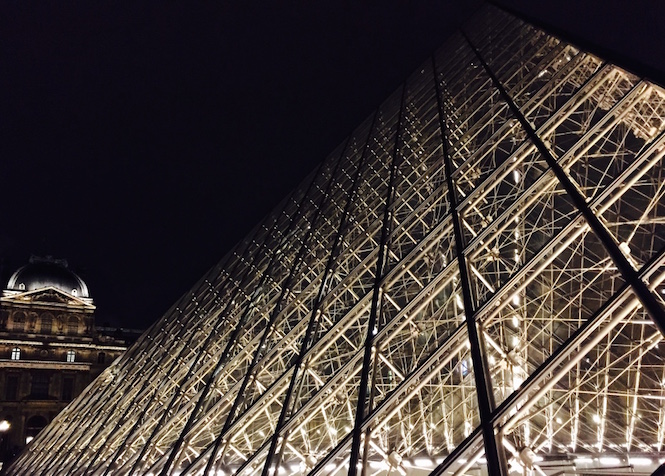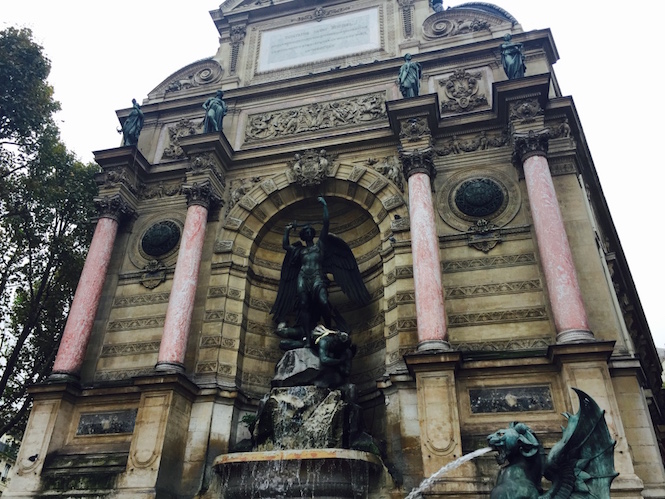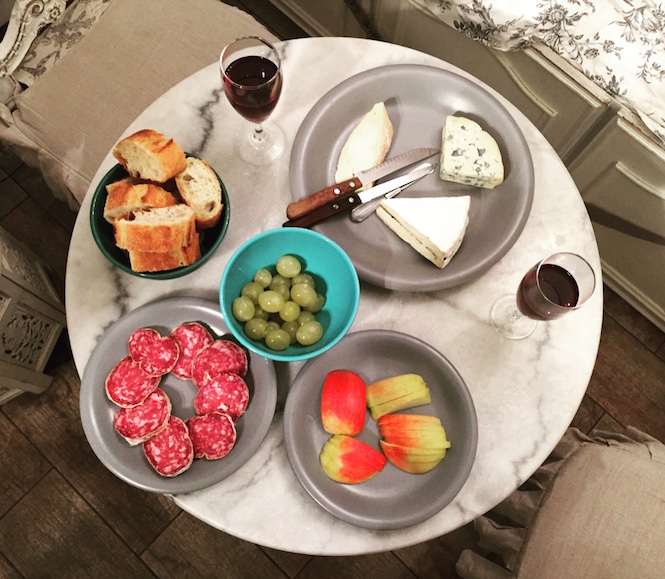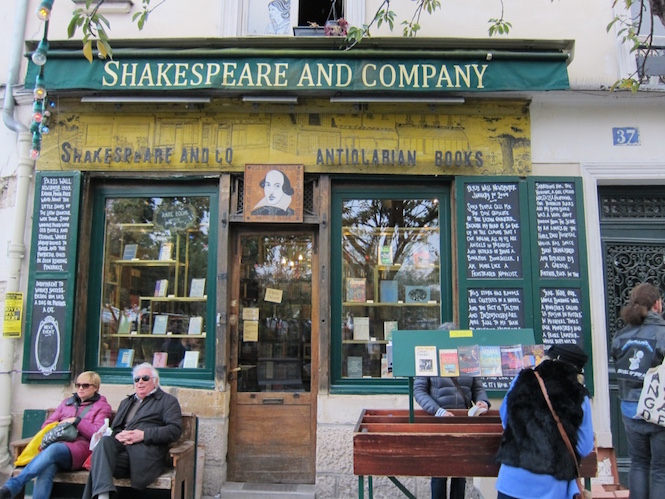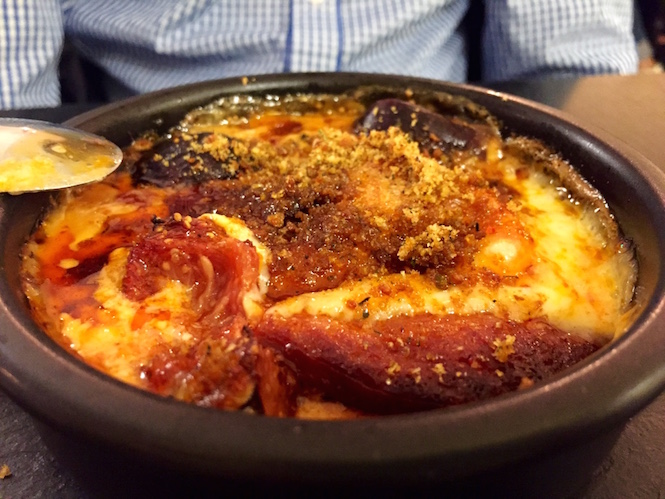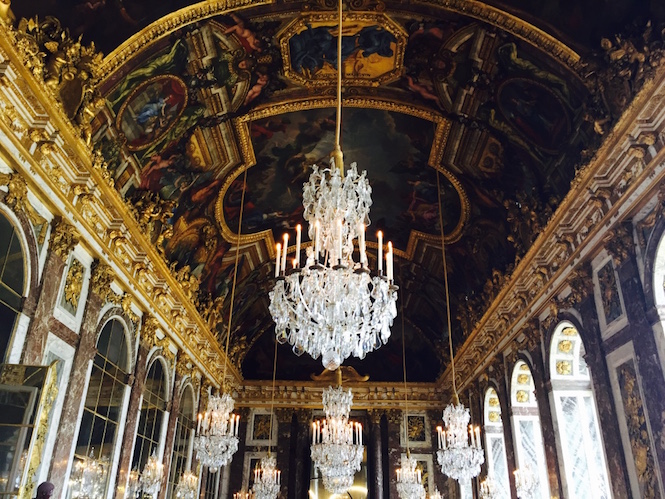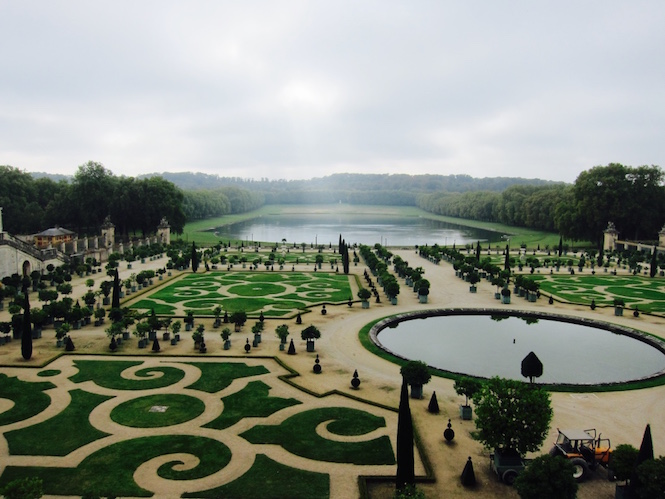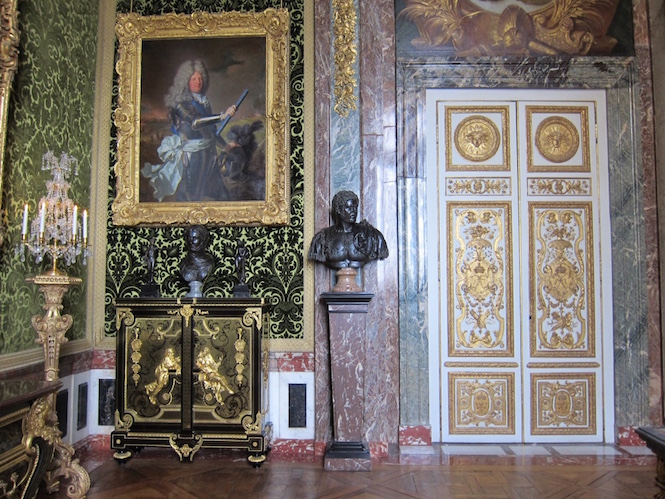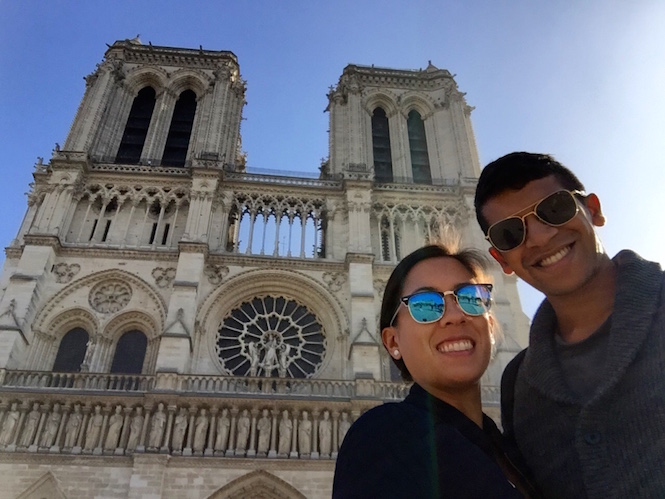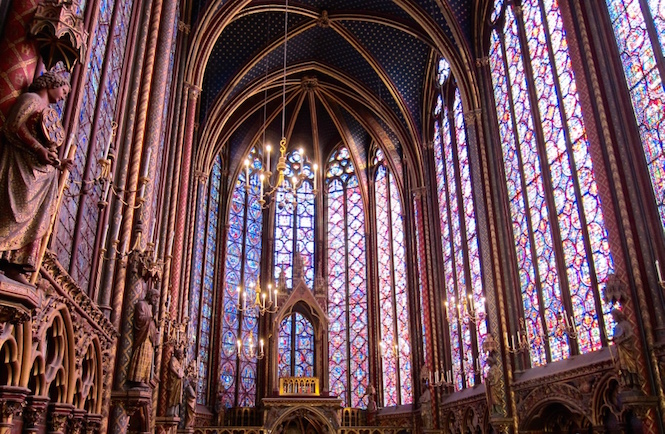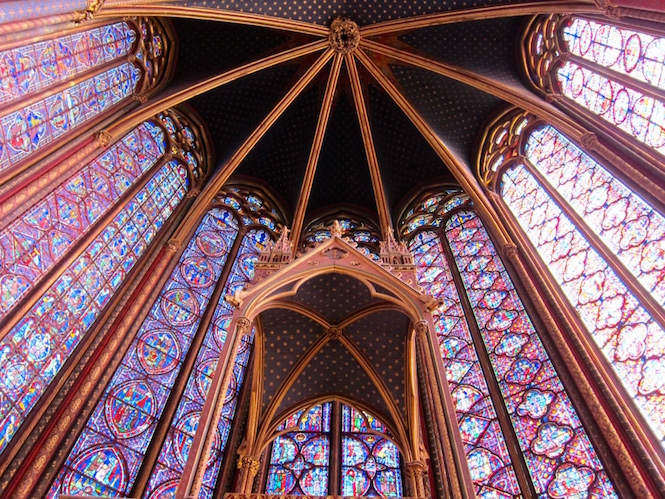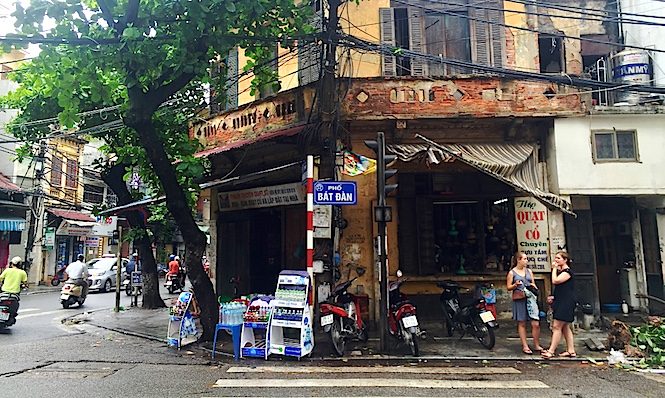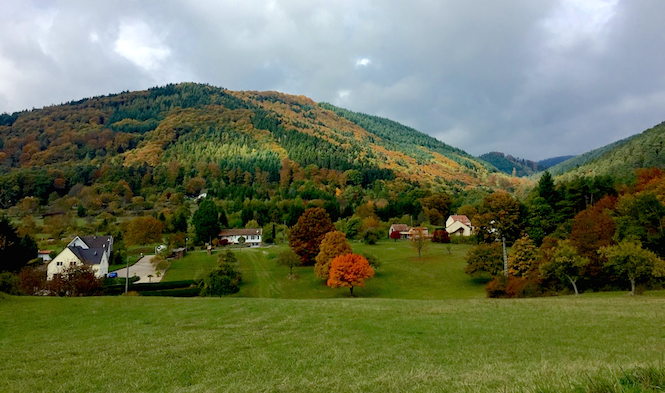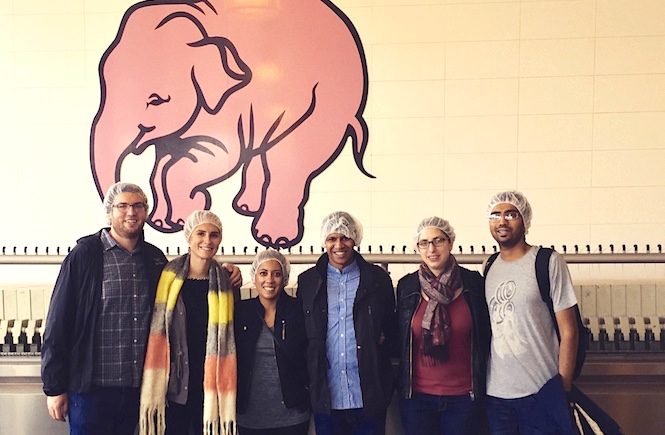This is the first part of our highlights and recommendations for Paris. For more about our time in the wonderful French capital, please see part two.
We loved our time in Paris—it is definitely our favorite European city we visited, plus in the top five of cities from the entire trip. Why did we love it so? Beautiful streets lined with the classic Parisian buildings; huge public parks where families, couples, and friends gathered to play and relax; the opportunity to choose between walking almost anywhere or taking the efficient public transit system; sidewalk cafes and bars where groups of friends would linger over their wine while enjoying the heat lamps.
We were there for seven full days, and that still wasn’t enough time to fully experience Paris. There is simply just so much to do! And as usual, we didn’t just want to spend our time on the tourist attractions, but wanted also to enjoy Paris like locals (at least as much as we could possibly hope to do, especially with our very limited French).
Here’s what we did for the first four of our wonderful seven days in Paris.
Day One
We started the day with a simple French breakfast of baguettes, croissants, and coffee, and then we ventured out to Montmartre, the historically artsy neighborhood in Paris. We walked upwards along the winding streets and eventually arrived to the Sacré-Cœur Basilica. From here, we got treated to stunning (though foggy) views of the city.
We got cheesy crepes for lunch, and then relaxed most of the afternoon in our AirBnB apartment in the 2nd arrondissement (district). After spending the prior day in a car driving from Alsace—and in preparation for a packed week in Paris—we enjoyed having this quiet time.
For dinner, we went to Kotteri Ramen Naritake, a nearby popular ramen joint—and for good reason! While (surprisingly) there was a bit too much pork for me, it was still delicious, and the noodles had a perfect bounce to them. Then for the rest of the evening, we walked around the outside of the Louvre and got our first glimpse of the glittering Eiffel Tower.
Day Two
As we’ve done in most European cities, we did a free walking tour. We love doing these because they provide a good historical overview of the place, interesting stories behind famous attractions, and local recommendations for food and things to do.
Our three-hour tour with Sandeman’s New Europe (highly recommend them!) included stops in the Latin Quarter and the outside of the Notre Dame and the Louvre. We also heard stories about the first settlers in Paris (the Parisii, eventually conquered by the Romans in 52 BC), the near-destruction of the Notre Dame in the aftermath of the French Revolution (but Victor Hugo led the renovation and preservation efforts), and how Parisians celebrated when France won the World Cup in 1998 (they dressed a St. Michael statue in a French jersey, who was casting down the devil wearing a Brazilian jersey).
After the tour, we meandered through the specialty food markets on Rue Montorgueil near our apartment. We picked up brie with truffle, Alsatian muenster, and bleu cheese—plus some salami—from a cheese shop, then some apples and grapes at a fruit stand, and a freshly baked baguette at a bakery. We made a lovely little lunch out of all this!
We later walked more around the Latin Quarter, so called because the Sorbonne University is located there and students in the Middle Ages traditionally spoke Latin, not French, in the area.
Our favorite spot here was the Shakespeare and Company bookstore, opened in 1951 in tribute to an earlier bookstore where the “Lost Generation” authors (Hemingway, Joyce, etc.) gathered, wrote, and shared ideas. Unfortunately, the original bookstore closed during the German occupation of Paris during World War Two, but the current bookstore seems to be a great hub for modern-day bibliophiles and honors the legacy of the original place. Vikram and I spent almost an hour here, simply wandering around and reading through different books. In the end, we bought The Dubliners by James Joyce and The Shortest History of Europe by John Hirst.
For dinner, we treated ourselves to a traditional French meal at Les Tribulons—my favorite dish was the cassoulet with muenster, fig, and sausage!
Day Three
On our third day in Paris, we went to Versailles, the palace built by King Louis XIV in the 17th century. Visiting Versailles requires a full day trip. It takes about an hour to get out there, though it’s pretty easy with Paris’ great public transportation system. Once there, we bought the 18 euro “passport” ticket that provides entry to all of the palaces sites, including the main Château de Versailles (the actual palace) and Marie Antoinette’s estate.
The ostentatious display of wealth here makes it pretty clear why the French people eventually revolted against the monarchy in 1789!
Day Four
We started the day with a visit to the Marché Bastille, an open-aired market stretching for several blocks from the Bastille Monument. Here, Parisians (and a few tourists, like us) were out buying fresh groceries—meats, fish, oysters, cheese, breads—and an assortment of other things, like flowers and clothing. We just got a nutella and banana crepe. (Our nutella consumption has increased significantly while being in Europe.)
From here, we walked across the Seine to the two islands—first, the Île Saint-Louis, and then to the Île de la Cité with the Notre Dame. Visiting the Notre Dame is free, and though the line seemed a bit intimidating at first, we were inside within five minutes.
While the Notre Dame was impressive inside—the high vaulted ceilings certainly make you feel small while you’re walking around inside—we both preferred the Sainte-Chapelle. I had never heard of this church before (and everyone has heard of the Notre Dame), but it ended up being my favorite attraction in Paris. The Sainte-Chapelle was built by King Louis IX in the 13th century as his private royal chapel. The main feature of the chapel is the stained glass—incredibly, for a building this old, 70 percent of the stained glass is original!
The chapel entrance brings you into the rather dreary lower chapel, but as soon as I stepped off the stairs into the upper chapel, I literally gasped. With all the shining and colorful stained glass, it was one of the most beautiful buildings I’ve ever seen.
Travel Notes:
- We stayed in an AirBnB apartment in the 2nd arrondissement, a location that we really enjoyed. It was a quiet street but we were close to a lot of shops, cafes, and bars. We could also walk easily to several sites including the Louvre and the Notre Dame, and a subway stop was only five minutes away. Perhaps due to it being low season, but our private apartment was surprisingly inexpensive at $73 USD per night—much higher than our average lodging cost this year, but still pretty good for the heart of Paris!
- We’ve done several tours with Sandeman’s New Europe in different European cities and have loved all of them. They always offer a free walking tour that is tip-based—we usually give about 10 euro per person at the end.
- Shakespeare and Company is open late until 11 pm, a signature feature of many bookstores in the Latin Quarter. It also has an attached cafe (closes a bit earlier) that has delicious—but pricey—chai lattes. There are also regular book readings and other events at the bookstore.
- Tickets to see everything at Versailles cost 18 euros. It’s recommended to buy tickets online to then skip the ticket line there, but the day we went the ticket line was actually pretty short but the security line to get in was very long (about 30 minutes). Tickets are sold inside the building to your left when you get to Versailles. An audio guide is included in the ticket, but we found it to be a bit underwhelming. There are unofficial audio guides that you can download in advance and use on your smartphone instead.
- The Sainte-Chapelle costs 10 euro per person, which seems steep for entry into a church but was totally worth it in my opinion. We also purchased the audio guide for 3 euro per person, which provided a thorough history of the chapel, how and why it was built, and explanations for different stories told in the stained glass. Try to go on a sunny day to experience the full effect of the stained glass!

